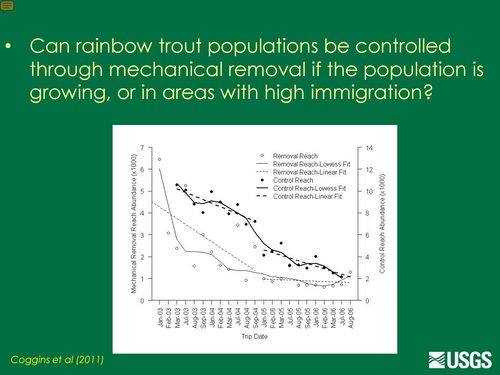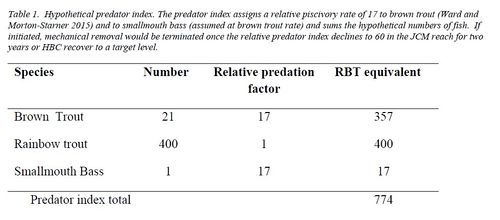Difference between revisions of "Trout Reduction Efforts"
Cellsworth (Talk | contribs) |
Cellsworth (Talk | contribs) |
||
| Line 101: | Line 101: | ||
'''2017''' | '''2017''' | ||
| + | *[https://doi.org/10.1016/j.biocon.2018.01.032 Bair et al., 2018, Identifying cost-effective invasive species control to enhance endangered species populations in the Grand Canyon, USA: Biological Conservation ] | ||
*[https://www.usbr.gov/uc/rm/amp/twg/mtgs/17jan26/AR11_Bair.pdf Is Rainbow Trout Control Necessary, and if so, What is the Most cost-effective approach? ] | *[https://www.usbr.gov/uc/rm/amp/twg/mtgs/17jan26/AR11_Bair.pdf Is Rainbow Trout Control Necessary, and if so, What is the Most cost-effective approach? ] | ||
Revision as of 17:42, 20 February 2018
|
|
Findings from the Natal Origins Project (NO) Project
|
| -- |
-- |
-- |
|---|
Coggins et al. 2011.Our results suggest that removal efforts were successful in rapidly shifting the fish community from one dominated numerically by nonnative species to one dominated by native species. Additionally, increases in juvenile native fish abundance within the removal reach suggest that removal efforts may have promoted greater survival and recruitment. However, drought-induced increases in river water temperature and a systemwide decrease in rainbow trout abundance concurrent with our experiment made it difficult to determine the cause of the apparent increase in juvenile native fish survival and recruitment. |
|



